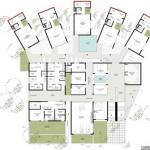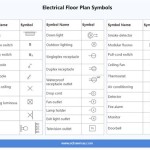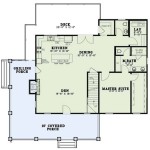Sketch Floor Plan Template: A Comprehensive Guide
A sketch floor plan template provides a pre-designed framework for creating floor plans, offering a convenient starting point for architects, interior designers, real estate agents, and homeowners. These templates range from basic outlines to more detailed structures, incorporating common architectural symbols and measurements. The primary purpose is to streamline the initial planning phase of a construction or renovation project, enabling users to quickly visualize and communicate their ideas. A well-chosen template can save time, promote accuracy, and ensure consistency throughout the design process.
The format of sketch floor plan templates varies depending on the software or medium used. Digital templates are frequently available in vector-based formats like DWG or SVG, allowing for easy scaling and modification. Hand-drawn templates might be printed on graph paper or include pre-printed room shapes and furniture outlines. Regardless of the format, the core function remains the same: to provide a foundational structure that simplifies the creation of a floor plan.
Effective utilization of a sketch floor plan template requires understanding its limitations and strengths. It is not a substitute for detailed architectural drawings or professional design services. Instead, it serves as a visual aid for brainstorming, conceptualizing spatial arrangements, and communicating preliminary design ideas to stakeholders. The template facilitates rapid iteration and exploration of different design options, ensuring that the core requirements are addressed before investing in more comprehensive planning.
Benefits of Using a Sketch Floor Plan Template
The advantages of utilizing a sketch floor plan template are numerous, extending across various stages of the design process. These benefits contribute to improved efficiency, better communication, and ultimately, a more successful project outcome.
Time Savings: One of the most significant benefits is the reduction in time spent on initial layout creation. Instead of starting from a blank slate, users can leverage pre-defined elements and structures within the template. This allows for a faster transition to focusing on the specific design considerations that are unique to a project. The pre-built elements, such as walls, doors, and windows, reduce the need for repetitive drawing, enabling designers to focus on spatial planning and functional arrangement.
Improved Accuracy: While a sketch floor plan is not intended to be a precise architectural drawing, utilizing a template can still improve accuracy. Many templates include built-in scales and measurement tools, ensuring that the overall dimensions are generally correct. Furthermore, pre-defined symbols for architectural elements help maintain consistency and minimize errors in representing those elements. Using a template is especially helpful for individuals with limited experience in architectural drafting, as it provides a structured approach to creating a visually accurate representation of the space.
Enhanced Communication: A sketch floor plan created with a template provides a clear and easily understandable visual representation of the design. This visual aid is crucial for communicating design ideas to clients, contractors, and other stakeholders who may not have the technical expertise to interpret detailed architectural plans. By presenting a visual representation of the space, the designer can effectively convey the intended layout, flow, and functionality, fostering better understanding and collaboration among the project team. The template ensures a consistent visual language, minimizing ambiguity and facilitating productive discussions.
Cost-Effectiveness: Using a sketch floor plan template can contribute to cost savings by reducing the need for extensive revisions and rework later in the design process. By allowing for rapid prototyping and exploration of different design options, the template helps identify potential issues and challenges early on, before they become costly mistakes. Furthermore, the time saved on initial layout creation translates to reduced labor costs, especially for projects involving large or complex spaces. Numerous free and affordable templates are readily accessible, making this a budget-friendly option for initial design exploration.
Consistent Design Language: A floor plan template guides the user to use standard symbols for walls, doors, windows, and fixtures. This consistency ensures that the plan is easily understood by anyone familiar with architectural conventions, regardless of their background. If a freehand sketch is used, the symbols might not be consistent with industry standards. Templates reduce the ambiguity of interpreting the document for all stakeholders.
Key Features to Look for in a Sketch Floor Plan Template
When selecting a sketch floor plan template, it is essential to consider the specific needs and goals of the project. Several key features can significantly impact the usability and effectiveness of the template.
Scalability and Customization: The template should be easily scalable and customizable to accommodate different room sizes and configurations. Vector-based templates are generally preferred because they allow for seamless resizing without loss of quality. The ability to add, remove, and modify elements is crucial for adapting the template to the specific requirements of the project. Templates should also offer options for customizing colors, line weights, and text styles to match the overall design aesthetic.
Comprehensive Symbol Library: A comprehensive library of architectural symbols is essential for accurately representing different building elements and fixtures. The library should include symbols for walls, doors, windows, stairs, plumbing fixtures, electrical outlets, and other commonly used components. These symbols should be clearly labeled and easily accessible within the template. A well-stocked symbol library minimizes the need for manual drawing and ensures consistency in the representation of different elements.
Measurement Tools and Grids: Accurate measurement tools and grids are important for maintaining proportionality and ensuring that the overall dimensions are correct. The template should include a built-in scale, as well as options for displaying measurements in different units (e.g., inches, feet, meters). A grid overlay can also be helpful for aligning elements and maintaining consistent spacing. These tools facilitate the creation of a visually accurate and proportional floor plan, even at the sketch level.
User-Friendliness: The template should be easy to use and navigate, even for individuals with limited experience in architectural drafting. The interface should be intuitive and well-organized, with clear instructions and tooltips. The template should also support different input methods, such as mouse, keyboard, and touch screen. A user-friendly template reduces the learning curve and allows users to quickly create and modify floor plans without frustration.
Layering Capabilities: The ability to work with layers is a beneficial feature for managing different elements of the floor plan. Layers allow users to separate walls, furniture, and other objects into distinct groups, making it easier to edit and modify specific elements without affecting others. Layering also enables users to create different versions of the floor plan, showing different design options or specific aspects of the project.
Applications of Sketch Floor Plan Templates in Various Industries
Sketch floor plan templates find widespread application across diverse industries where spatial planning and visualization are crucial. Their versatility and ease of use make them valuable tools for a variety of professionals.
Residential Real Estate: Real estate agents and property managers use sketch floor plan templates to create simplified floor plans for property listings. These plans provide potential buyers or renters with a clear understanding of the layout and dimensions of the property, enhancing their ability to visualize the space. The templates can also be used to create virtual tours and interactive floor plans, providing a more engaging and informative experience for prospective tenants or buyers.
Commercial Real Estate: In the commercial real estate sector, sketch floor plan templates are utilized to create layouts for office spaces, retail stores, and other commercial properties. These plans help visualize potential tenant improvements, space planning options, and circulation patterns. Brokers can use these plans to attract potential tenants by showcasing the versatility and functionality of the space. The templates can also be used for space optimization and to ensure compliance with building codes and accessibility standards.
Interior Design: Interior designers rely on sketch floor plan templates to quickly test different furniture arrangements, color schemes, and lighting layouts. They serve as a starting point to discuss the client's preferences. The templates helps communicate the design concept to the client and receive feedback. The template promotes collaboration and ensures that the end result aligns with the client's vision.
Construction and Renovation: Contractors and homeowners use sketch floor plan templates to plan renovation projects, additions, and remodeling efforts. These plans provide a visual representation of the proposed changes, enabling them to estimate material costs, plan construction timelines, and communicate their vision to subcontractors and other stakeholders. The templates can also be used to obtain building permits and approvals from local authorities.
Event Planning: Event planners utilize sketch floor plan templates to create layouts for weddings, conferences, and other events. These plans allow them to visualize seating arrangements, stage placement, and traffic flow, ensuring that the event runs smoothly and efficiently. The templates can also be used to create seating charts, directional signage, and other visual aids for attendees.
Facility Management: Facility managers use sketch floor plan templates to maintain accurate records of building layouts, equipment locations, and emergency exit routes. These plans facilitate space management, asset tracking, and emergency preparedness. The templates can also be used to plan maintenance activities, allocate resources, and optimize space utilization.

Floor Plans Learn How To Design And Plan

20 Floor Plans Template Simple Design

How To Draw A Floor Plan Live Home 3d

Free Floor Plan Creator Design 2d 3d Layouts Easily

Revit Floor Plan Tutorial Bim Pure Blog

Upload Draw From Or Trace Over A Blueprint Roomsketcher

How To Draw Floor Plans Create In 2d And 3d

Home Floor Plans House Plan Drawings

Creating A Simple Floor Plan Sketchup Community

House Plan Drawing Samples 2d Drawings








